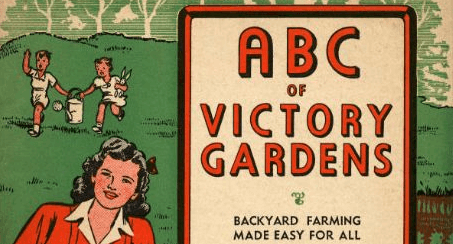The Victory Garden- Where do I start?
Don’t start digging just yet!
The first step to a successful Victory Garden is to understand its purpose and create a garden plan that is tailored to your family’s needs. Your garden should not only contain the foods that your family enjoys eating, but also be the correct size and reflect the amount of work you are able and willing to do, from planting to preserving.
So let’s take a step back in time for a moment, all the way back to 1942 when the Department of Agriculture developed a short informational movie about the Victory Garden. It describes why it was so desperately needed, and how to plan, plant, and maintain it. Below is the link to this short movie if you’d like to take a moment to watch. There is great information here but, I encourage you to ignore their advice about pesticides as we have learned a great deal about their harmful effects since 1942.
As you can see from this movie, there is an absolute rhyme and reason to the way your plant your Victory Garden. You need to take into consideration the number of people you want to feed, as well as topics such as succession planting and crop rotation which we will delve into in future posts.
But this is not 1942. It’s 2020, and although the principles of the Victory Garden have not changed, the way that we live our lives and how we think about food has, and we need to take that into consideration when we create our garden plan.
So, let’s get started. The best place to begin is to ask yourself and your family some questions and have a discussion about food. Try to be realistic and honest, and think about your current eating habits. When you shop at the grocery store what types of foods do you normally purchase? Do you buy frozen or boxed prepared meals that just need a whack in the microwave? Do you buy a lot of packaged snack foods that can be eaten on the run?
In the event we ever did experience a true commercial food chain emergency like we have in the past, those foods that make our lives so much easier may no longer exist on a mass scale. The way we eat and think about food would dramatically change. This concept was probably a little easier to swallow in 1942 when the current array of convenience foods simply didn’t exist. Any scarcity or rationing of food was for staples that the average American could not grow or produce at home such as sugar, flour, or coffee. The Victory Gardens’ purpose was to produce those herbs, fruits, and vegetables necessary to create from scratch, the same meals that we might buy already prepared and pop in the microwave.
This is where the size of your garden and the amount of work you’re comfortable with will come into play. While creating a Victory Garden is a noble and worthwhile purpose, you need to think realistically about the tasks and skills that go along with it. As we will learn, it’s not just about the labor intensity of the garden itself, but extends to the amount of time and work it will take to preserve your harvest and create the meals that come from it. A successful Victory Garden and its resulting food security is the result of smart planning, hard work, and the involvement of the entire family. Yes, this endeavor involves commitment but, if everyone is willing to jump in and learn, it will be a very rewarding and prosperous experience!
In our next segment, we will discuss the size and location of your Victory Garden so stay tuned!

